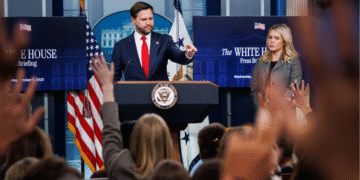The Shutdown Begins
At 12:01 a.m. on October 1, 2025, the U.S. federal government officially entered a shutdown. Congress failed to agree on a funding extension, meaning many government programs lost their legal authority to spend. This isn’t just a minor delay — it’s a halt in services, staff pay, and national projects.
What makes this shutdown different is how the White House is responding. Instead of waiting for a resolution, the administration is moving to freeze or cut billions in federal funding, especially in states and projects seen as politically opposed.

What the White House Is Cutting — And Why
One of the most dramatic moves includes an $18 billion freeze on infrastructure funding for major New York City projects, such as the Hudson Tunnel and Second Avenue Subway.
At the same time, about $8 billion in climate and green-energy projects across 16 states are facing cuts. Many of these states supported Democrats in the last election. These cuts aren’t just financial — they’re strategic. Many see them as pressure tactics meant to force Democrats to accept the White House’s terms.
The Human and Economic Toll
Federal Workers
Around 750,000 federal employees are facing furloughs, meaning they won’t receive pay until Congress restores funding. Essential workers are staying on the job, but they too will go without pay until the shutdown ends.
The Economy
A White House memo warns that the shutdown could cost the U.S. around $15 billion in GDP every week. Consumer spending is expected to drop sharply, driven by lost income for government workers and broader economic ripple effects.
Public Services and Programs
Many programs face suspension or delays. Health care subsidies tied to the Affordable Care Act are at risk, meaning insurance premiums for millions could double. Even basic local services are affected — for example, issuing marriage licenses in Washington, D.C., has already been paused.
Politics, Blame, and the Path Forward
The blame game is in full swing. Republicans accuse Democrats of refusing to include their demands, such as changes to health care subsidies, in the funding extension. Democrats argue that the White House cuts are vindictive and unfairly punish states that oppose its policies.
As the shutdown continues, the White House could increase pressure further or move toward a compromise. Senate votes are expected soon, but deep divisions remain.
Why This Shutdown Feels Different
Past shutdowns have always brought furloughs and halted operations, but this time is different. The administration is using funding cuts as leverage, freezing projects and redirecting funds to gain political ground.
This raises a larger question: should essential services and programs be caught in political battles? When infrastructure, livelihoods, and everyday services are at stake, the cost of delay becomes more than just numbers — it becomes deeply personal.
















